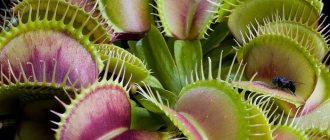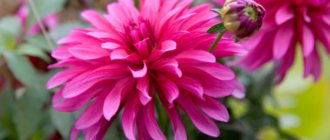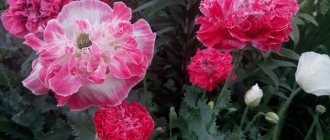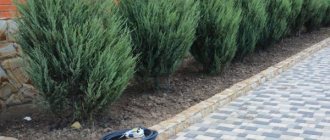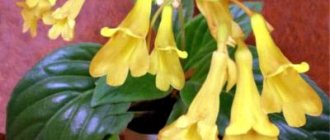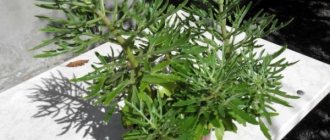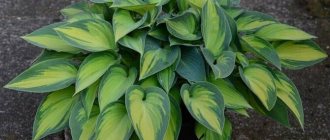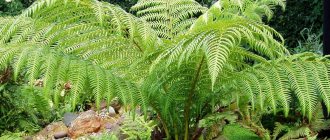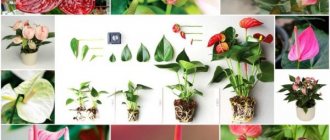What does a flower look like, what family does it belong to?
The Venus flytrap (Dionea muscipula) belongs to the perennial herbaceous insectivorous plants. This is the only representative of its genus from the Rosyankov family (Droseraceae). The Latin name "muscipula" translated into Russian means "mouse trap", probably the botanist who gave the species name to the flower wanted to write "muscicipula" (fly trap) and was mistaken.
Scary appearance of the plant
History of appearance
This plant predator was originally named after Venus, the goddess of plants and love in Ancient Rome, and in Greek mythology, Dione was the mother of Aphrodite.
The natural habitat of the flycatcher is the peat bogs of North and South Carolina, USA. In nature, the number of plants of this species is rapidly decreasing due to human activity, but the Venus flytrap is widespread and in demand among gardeners all over the world.
Insectivorous plant in the wild
Dionaea leaves are collected in rosettes growing from a short, bulbous stem underground. Each plant has 4-7 elongated leaves, at the end of which traps are formed. Such specific leaves consist of two valves and are able to close due to long thin bristles located along the edges. By folding, the flaps hold the caught prey inside and do not allow it to escape.
An insect caught by a flytrap will not be able to escape from the trap.
The characteristic color of the flower is green. The traps have a similar color, but may appear reddish on the inside in good light.
Common varieties
In addition to the characteristic shape of the plant, breeders have developed many different varieties, differing in color and size. Eg:
- Dantate Trap. The bush is painted green, with a red stripe running along the front side of the leaves. Leaves and traps are located almost vertically.
- Giant. The peculiarity of this variety is that the size of the traps is more than 5 cm, and in bright light they turn purple.
- Akai Riu. In this variety, not only the traps, but also the leaves are colored red.
- Regyula. The green leaves of the bush are diluted with traps of red and purple shades.
- Bohemian Garnet. A dark green bush with wide leaves that cover the surface of the entire substrate; traps are also placed vertically.
- Funnel Trap. The young bush is colored green, and as the leaves of the plant mature, they acquire a red tint.
- Crokedile. The leaves of the flycatcher are arranged horizontally. Young traps have a pale pink tint, after a while they turn red.
- Triton. The variety is distinguished by its unusual shape of traps. They are elongated, and their teeth often stick together.
- Dracula. The green bush has traps with a red cavity, the cloves are short.
Medicinal properties
Dionaea is not medicinal. Contraindications to its use have not been studied in medicine.
Note! The use of the flytrap not only internally, but also externally is not recommended.
Features of plant care at home
Even novice gardeners will be able to grow the Venus flytrap plant: caring for the flower at home is not at all difficult. The bushes grow well in poor, acidic soils with good water permeability. Except in indoor conditions, the flower can live in a summer cottage.
Ambient temperature and humidity
Venus flytrap - home care
In summer, Dionea needs a temperature range of 20 to 30 °C. During the winter season, it is recommended to keep the plant at a temperature no higher than 10 °C. This period should last 3-4 months. If the temperature is not maintained, the plant may die, so it is most often planted in florariums or glass greenhouses. Thanks to such conditions, it is possible to maintain the necessary air humidity, which should be quite high.
Note! The bush reacts extremely negatively to stagnant air, so the room where the flytrap grows must be periodically ventilated, avoiding drafts.
Lighting
For the normal development of a flower, it needs to create conditions that are as similar as possible to natural ones. A specific carnivorous plant likes to sunbathe for 4-5 hours a day. If natural light is not enough, you can supplement it with artificial lighting. Experts recommend placing the bush on the western or eastern side of the house.
Advice! The bush tolerates sunlight well in the morning and evening hours. The plant must be shaded from direct rays of the sun.
Watering
Due to the morphological characteristics of the root system, the plant cannot process mineral salts from the soil, so it is necessary to water the flower with rainwater or distilled water.
Important! It is better to store rainwater in plastic containers rather than metal ones.
The soil in the pot should always remain moist; if the soil dries out, the plants may die. It is better to keep the container with dionaea in a pan of water so that the holes at the bottom of the pot are immersed in it. This way the plant can receive water when it is needed. A couple of times a week you can spray the bush with a spray bottle.
It is better to place a pot with a dionaea bush in a tray with water
Priming
It is best to use sphagnum moss, perlite and coconut substrate as soil for the Venus flytrap. A mixture of high peat and quartz sand in a ratio of 2 to 1 is also suitable. If the purchased plant is in a different substrate, it is better to replant it immediately.
Important! Using any sand other than quartz can lead to the death of the plant.
The plant must be kept in a pot with a depth of at least 10-12 cm; it should not be too wide, but not narrow either. There is no need to replant the flower every year; this can be done every 2-3 years, but very carefully so as not to provoke traps.
Feeding
The insectivorous Dionaea does not need fertilizers, since it gets everything it needs from the insects it eats. Therefore, there is no need to fertilize the soil. The content of any fertilizers in the plant substrate poisons the crop.
What not to feed a Venus flytrap:
- beetles with a hard chitinous shell;
- earthworms;
- gnawing insects;
- sausage or meat.
For the entire growing season, the plant needs 2-3 medium-sized spiders, flies or mosquitoes. At the end of September, feeding stops until spring.
It’s interesting to watch the feeding process, but don’t forget some rules in order not to harm the plant:
- Dionea takes food only when she is hungry (feels a lack of nitrogen). At other times, mosquitoes and flies do not interest her.
- You can't tease a plant for fun. The process of catching and digesting food is very energy-consuming; in addition, each trap dies after a certain number of slams.
- You cannot feed Dionaea from a common table. The flower reacts only to live food, the trap closes and begins to secrete digestive juices only if the victim moves and touches special hairs (triggers). Therefore, the plant will not react to non-living food.
- The size of the food is important. Dionaea will not be able to digest too large “pieces” of food. The remains will begin to decompose and rot.
Important! Remains of food that the flycatcher has not eaten must be carefully removed to prevent rotting. Otherwise, the plant may die.
Feeding a carnivorous plant
In any stressful situation, the plant refuses food. The flycatcher experiences stress during transplantation, during illness, lack of light, or simply a sudden change in environment.
Bushes that grow in open ground are able to feed themselves, but those specimens kept on the window cannot feed on their own and require care.
Flycatcher cuttings
Growing flycatchers by cuttings is best done in the spring. To do this you need:
- Cut a few leaves from the rosette. To improve the rooting of cuttings, you can use a biogrowth stimulator.
- Before planting, you need to prepare a substrate consisting of quartz sand and peat.
- Pour a small layer of prepared soil into containers and plant the cuttings.
- Cover the plants with a jar or plastic bottle and place them in a lighted place.
- The disadvantage of this method is the high possibility of rotting and fungal infection. To prevent this from happening, it is necessary to ventilate the pots by removing the covers.
- After three months, the sprouts will take root and the root system will become stronger. Then they can be transplanted into separate containers using soil for adult individuals.
Dividing a bush for planting
A very simple way to breed a flycatcher. When replanting, it is removed from the pot and removed from the soil. Using a knife, carefully separate the fused rosettes. Then, the resulting flowers are planted in separate containers and taken care of as usual at home.
Features of winter care
Venus flytrap plant - how and what to feed
Preparation for winter in Dionea begins in the fall. The leaves dry out, turn black and fall off, and the plant itself shrinks. Inexperienced gardeners may mistake this state of the plant for a disease and try to revive it. But for the flycatcher this is a normal state during rest.
During wintering, the pot with the predator plant should be placed in a cool place:
- a window sill where the temperature is below room temperature;
- bottom shelf of the refrigerator;
- cellar.
“Sleep it off” and gain strength during winter is simply a necessity for Dionaea. The plant is left in this state until mid-February. During this period, there is practically no need to care for the plant; it is enough to occasionally check the condition of the substrate - it should be slightly moistened.
The flower begins to awaken slowly at the end of February. And at the end of spring, with the onset of summer, the flycatcher begins to actively grow.
Preparing the plant for winter
Overwintering of the Venus flytrap and rest period
At the end of September, the young leaves of the flycatcher stop forming, the old ones darken and fall off. The socket decreases in size. These are signs of the beginning of a period of rest. No feeding required. Water rarely and moderately, making sure that the soil does not dry out. In December, the pot with the flytrap is moved to a place where the temperature is no more than +10 °C. Store the plant in the basement, in the lower section of the refrigerator.
The Venus flytrap begins to wake up only in February and is returned to its original place. They cut off last year's old traps and begin to care for them as usual. Active growth is observed at the end of May.
When and how does it bloom
Ficus Kinki - description and care at home
The carnivorous flycatcher begins to bloom in May or June. Long flower stalks with corymbose inflorescences of small flowers that look like stars appear on the bush. The flowers are about 1 cm in size, white in color, and have a sweetish smell. Flowering continues for several weeks.
Important! If there is no need for seeds, then it is better to cut off all the buds before they open, since during this period the plant spends a lot of energy and the growth of traps slows down.
There are no changes in caring for flowering bushes.
Reproduction
Reproduction of the flycatcher can be done in several ways:
- children;
- cuttings;
- peduncle;
- seeds.
Children
The easiest way in which Dionea can reproduce is to separate the children from the mother bush. During transplantation, the baby is carefully separated from the mother, trying not to injure the delicate roots of the plant. Separation is best done with a sharp knife, and then the sections should be treated with crushed activated carbon or fungicides.
Important! The flycatcher prefers to grow up as a family, with children. With their frequent separation, the plant noticeably weakens. Therefore, this method of reproduction is not recommended to be carried out more often than once every three years.
Separation of children from the mother bush
Cuttings
Leaves are cut from an adult plant. After treatment with Kornevin, the cuttings can be immediately planted in a substrate of peat and sand. It is important to plant the leaf at a slight angle and cover it with a greenhouse. It is left in a well-lit place for about 3 months, periodically ventilated and watered.
Important! Not all leaves will be able to produce roots, as they are often susceptible to fungal diseases.
Propagation using cuttings
Peduncle
Propagation of Dionaea by a peduncle should be carried out in the spring, when it has grown by 4-5 cm. It must be cut and deepened into the substrate with peat by approximately 1 cm and covered with a cap. Young shoots will appear after one and a half to two months of waiting. At this time, it is necessary to ventilate the rooted peduncle and keep the soil moist. Over time, it may dry out and take on a lifeless appearance, but this does not mean that propagation in this way was not successful; we must wait a few more months before new exotic plants appear.
Seeds
Propagation by seeds is a very complex and specific process that only experienced gardeners can handle. An approximate scheme for planting a flycatcher from seeds includes:
- Obtaining seeds by artificial pollination using a cotton swab. After a successful procedure, seed boxes appear within 30 days.
- After receiving the seeds, they should be sown within 3 months, otherwise they will lose their viability. The first seedlings appear within 15-20 days after sowing.
- After another 20 days, the seedlings can be planted into separate pots.
During the entire time of growing Dionaea from seeds, the crops should be kept in a greenhouse under diffused, bright light, and the soil mixture should always be moist.
When growing a flower from seeds, it is important to remember that it will become an adult in about 5 years.
Grown seed shoots
Diseases and pests
Dionaea, like any other indoor plant, can succumb to attacks from parasites from time to time:
- Spider mite. This reptile attaches itself to the plant from below, straining the juice from the leaves and weaving a web. As soon as you notice the pest, immediately treat the ward with a soap solution and spray it. After 6 days, repeat the procedure. You can use store-bought products.
- Aphid. A colony of parasites cannot be ignored. They lead to deformation of Venus flytrap traps. Parts of the plant that are particularly damaged by the pest will have to be removed, and the bush will have to be treated with an infusion of mustard, marigold or dope. If the aphids do not disappear after this treatment, resort to chemicals.
- Chervets. The pest itself and its cocoons will have to be collected manually using a paper napkin. You can use a cotton swab dipped in alcohol - this is a fatal procedure for the mealybug. Spraying with a soap solution should also lead to positive results.
